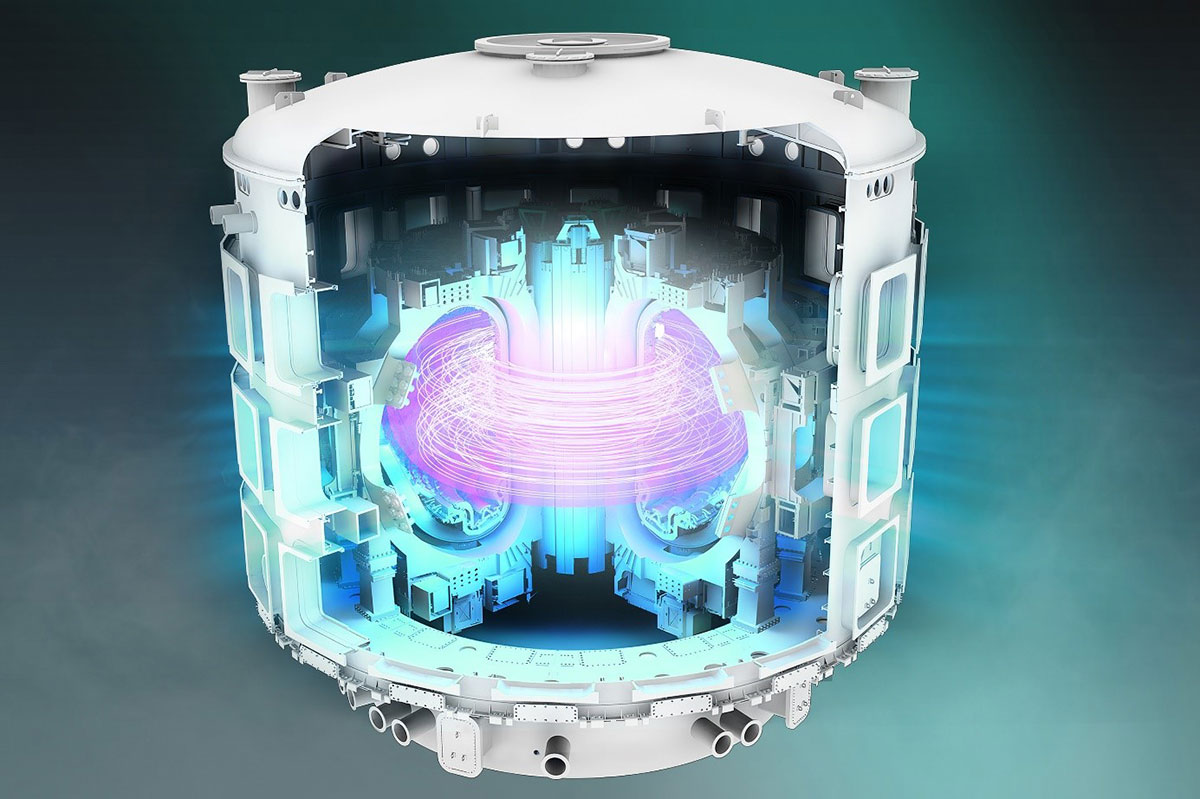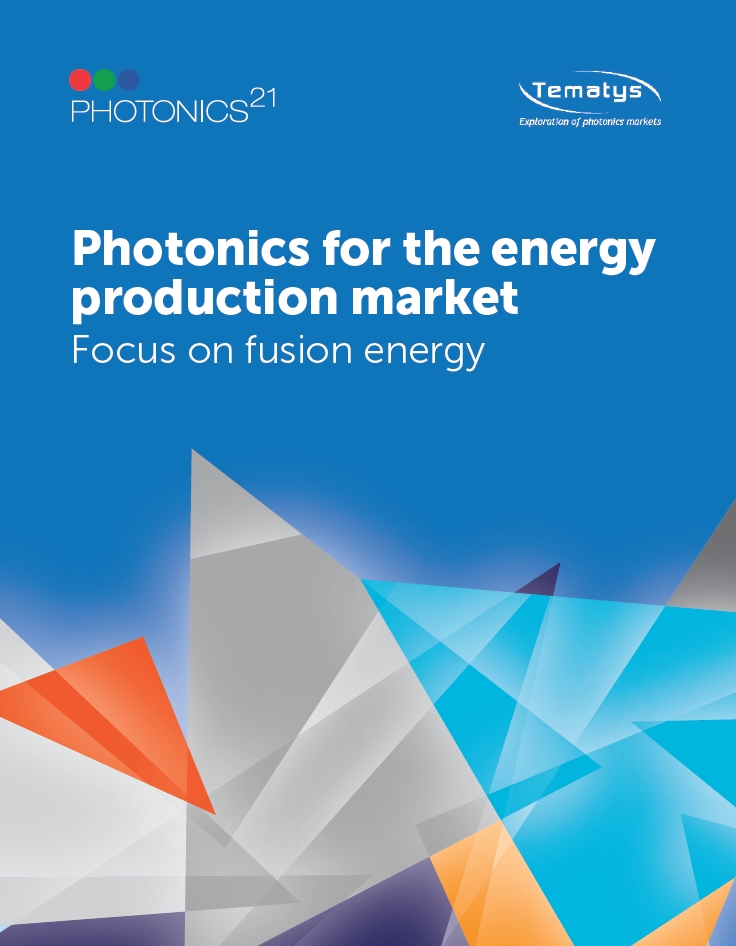An artist’s view of the ITER facility, a tokomak design. A new report from the European technology platform Photonics21 suggests that, regardless of the approach to fusion being pursued, photonics forms a crucial enabling technology. [Image: © European Joint Undertaking for ITER and the Development of Fusion Energy (“Fusion for Energy”)]
The European public–private partnership Photonics21 has released a short report highlighting the role of photonics in the development of fusion energy. Titled “Photonics for the Energy Production Market: Focus on Fusion Energy,” and assembled by the France-based, photonics-focused market-research firm Tematys, the report seeks to make the case that, whatever path the world might ultimately take toward sustainable fusion energy, photonics will be an essential technology for getting there.
An “extreme industrial challenge”
Commendably, the report is forthright about the obstacles still ahead on the path toward cost-effective, workable fusion power, which the study calls “an extreme industrial challenge.”
The study enumerates several hurdles in particular—well-known in the fusion research community, but often overlooked in enthusiastic public discussions. One relates to the materials used to surround and contain the fusion reaction. Whatever the technology approach, fusion of hydrogen nuclei to form helium nuclei throws off a stream of high-energy neutrons as a product; those neutrons, in a fusion plant in ongoing operation, would, on relatively short timescales, degrade and weaken containment structures built using industry-scale materials available today. The report also points to difficulties in practical extraction and use of heat from fusion reactions, and the general challenge of industrial scale-up of what are currently demonstration projects.
Moreover, while the fuel for fusion is usually touted as “unlimited,” that is only partly true. By far the most energetically favorable fusion reaction, and the one pursued by most projects today, is the fusion of two hydrogen isotopes, deuterium and tritium. While deuterium is indeed all but limitless on Earth as a component of seawater, tritium is very scarce indeed. And while new tritium could in principle be produced by sending fusion-generated high-energy neutrons through a “lithium blanket,” such a system has never actually been tested or demonstrated at scale.
Photonics in ICF
From the point of view of opportunities for the photonics business, the new report suggests, these practical industrial challenges may be a feature, not a bug. The study’s authors point out that lasers and photonics-based systems will be required across a range of areas required to scale up nuclear fusion, including high-precision laser-based manufacturing and photonics-based instrumentation and control systems. This is true both for magnetic-confinement fusion (MCF), the focus of facilities such as the European ITER project, and for laser-driven inertial-confinement fusion (ICF), such as the approach pursued at the US National Ignition Facility.
[Image: Photonics21]
ICF, of course, is the only fusion technology so far that has actually demonstrated a net energy gain (albeit small) from a fusion reaction. And, the Photonics21 report stresses, the approach “relies entirely on advanced photonics: advanced and very high-quality optical mirrors and components, crystals, amplifiers, and metrology instruments to control, synchronize and focus the laser beams.”
Curiously, however, the report’s ICF section also seems unable to avoid striking a note of skepticism. Noting that the ICF approach is “complex to develop and, above all, to master,” the report dwells on the difficulty of piling sufficient, evenly distributed laser power on a tiny fuel pellet, the need for highly refined pulse shaping and optimizations, and the industrial challenges of finding ways to harvest the energy released by the fuel pellet’s implosion and to repeat the process dozens of times per second, which would be necessary in any production-scale facility.
Nonetheless, the report notes that the quest to overcome these problems could be a boon to some local economies. The development and construction of the Laser Megajoule research facility in France, for example, spawned an entire photonics cluster in the area and created some 3,000 jobs, according to Photonics21.
Photonics in MCF
MCF, which works by confining the deuterium–tritium plasma in magnetic fields generated by huge superconducting coils, obviously has its own technological challenges. The report, however, focuses mainly on the distinctions between two different flavors of MCF facility: the tokomak, which uses ring-shaped toroidal magnetic coils, coupled with an electric current driven through the plasma, to generate the complex field required for confinement; and the stellarator, which uses a helical external-magnet design toward the same end.
“No complex infrastructure like fusion reactors can work,” the Photonics21 study argues, “without photonics as a critical enabler.”
In either case, the Photonics21 study argues, “no complex infrastructure like fusion reactors can work without photonics as a critical enabler.” The authors of the report point to functions like precision cutting, drilling and surfacing of ceramic and metal parts with lasers or production with precision laser 3D printing; photonically enabled systems that enable precise measurements for quality control; cameras and lidar for sensing by robotic systems; and more.
Further, in the case of manufacturing the complex helical magnetic coils required by stellarators, the Photonics21 report suggests that photonics could “change the game in the near future.” The study highlights the efforts of the Grenoble, France–based startup Renaissance Fusion (RF), which has raised €16.4 million (US$17.9 million) in VC funding. The authors cite the company’s plans to use a “disruptive strategy” for coil manufacture.
Specifically, the RF plan involves precise laser engraving of the complex patterns into a layer of high-temperature superconducting material deposited directly on cylindrical segments, which are then combined to constitute the doughnut-shaped confinement vessel. The approach, the report claims, “is a huge manufacturing simplification” relative to the alternative of making the coils by wrapping the doughnut with wires.


